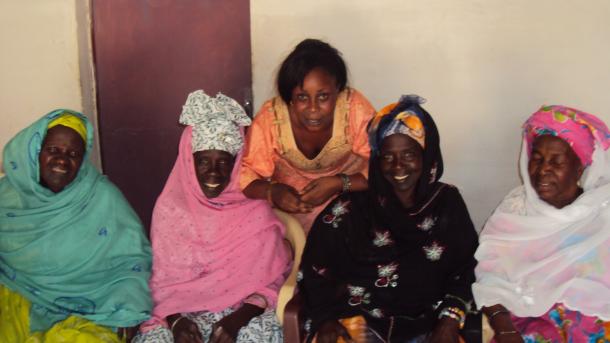Microfinance is rooted in service to the poor. But what classifies someone as poor? And how do microfinance institutions (MFIs) decide which clients to help? Generally, MFIs serve communities and individuals that would be considered poor by many standards. As microfinance has grown, however, MFIs have expanded their client base to serve borrowers above the poverty line too.
At Kiva, we believe serving those below the poverty line should be an MFI's primary goal. We reward our partners who share this belief with the Anti-Poverty Focus badge. “Targeting” is a critical component of this badge.

Women from the Ps Sindia Lorong Group, clients of CAURIE Microfinance.
There are two types of targeting practices: individual and geographic. Individual targeting assesses a client’s level of poverty and access to financial services before she becomes a borrower. Once a client receives a loan, the MFI can monitor the client’s level of poverty to track the impact of the loan. Geographic targeting assesses the level of poverty in a particular region.
Targeting is important for several reasons. It allows MFIs to figure out which people would benefit most from a loan. It enables MFIs to measure the impact of their loans, making it easier to identify and duplicate successful cases. And, it allows MFIs to identify regions that are most excluded from financial services.
CAURIE Microfinance, a Kiva Field Partner in Senegal, does a particularly good job targeting impoverished clients. The organization uses the Progress out of Poverty Index (PPI), a standardized, country-specific index that compares levels of poverty of different prospective clients. This helps it focus on areas where they can do the most good, and allows it to track the changes in clients’ standard of living over time. For CAURIE's exceptional work serving the poor, it earned Kiva's Anti-Poverty Focus badge.
To learn more about social performance and our badges, click here. Have questions? Send them our way at blog@kiva.org.
photo courtesy of CIMMYT
Targeting is important for several reasons. It allows MFIs to figure out which people would benefit most from a loan. It enables MFIs to measure the impact of their loans, making it easier to identify and duplicate successful cases. And, it allows MFIs to identify regions that are most excluded from financial services.
CAURIE Microfinance, a Kiva Field Partner in Senegal, does a particularly good job targeting impoverished clients. The organization uses the Progress out of Poverty Index (PPI), a standardized, country-specific index that compares levels of poverty of different prospective clients. This helps it focus on areas where they can do the most good, and allows it to track the changes in clients’ standard of living over time. For CAURIE's exceptional work serving the poor, it earned Kiva's Anti-Poverty Focus badge.
To learn more about social performance and our badges, click here. Have questions? Send them our way at blog@kiva.org.
photo courtesy of CIMMYT
PREVIOUS ARTICLE
Retail Consumers as Micro Lenders + What is FITE? + Maya Entrepreneurs Supported by FITE →NEXT ARTICLE
Week in Review: The true power of crowdfunding →















